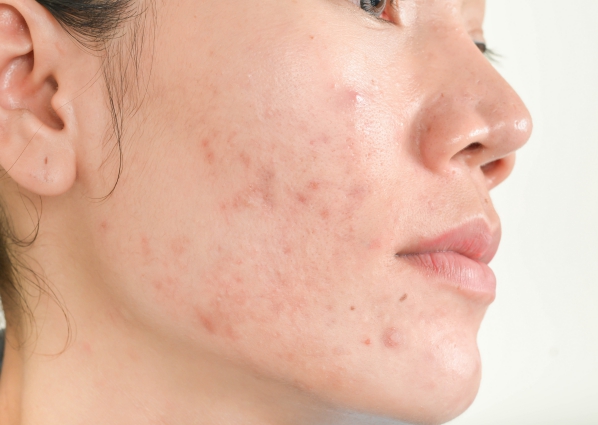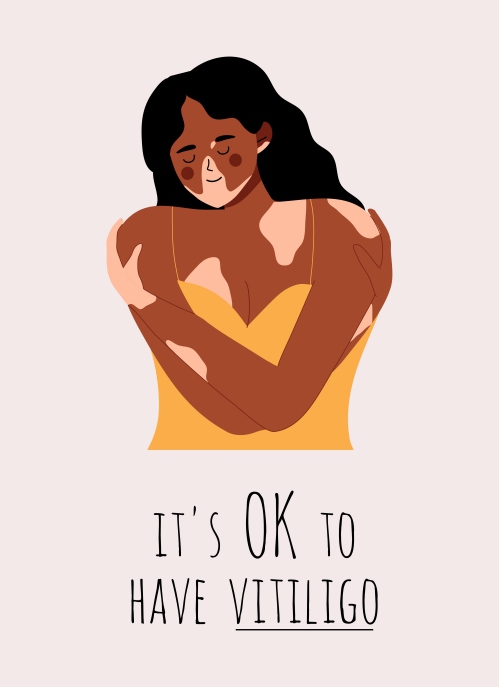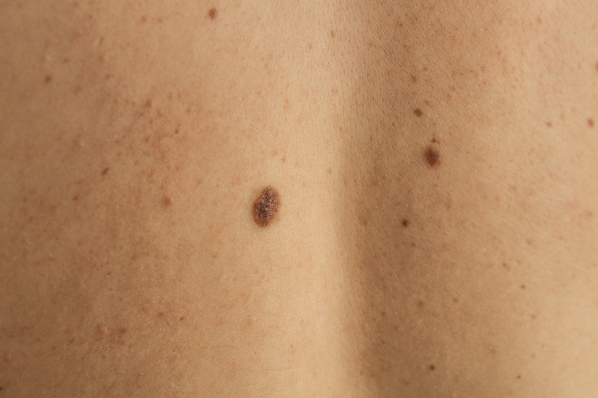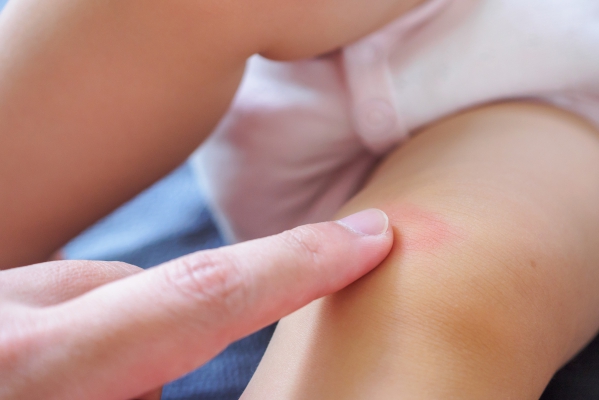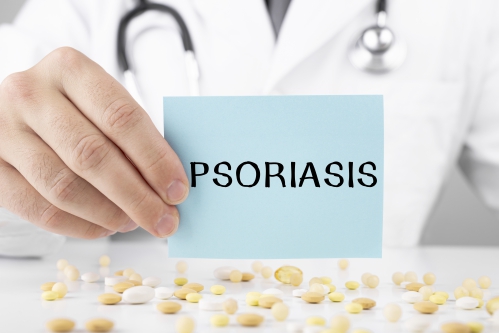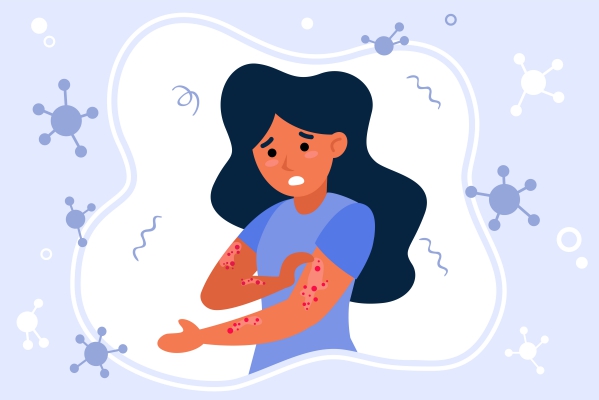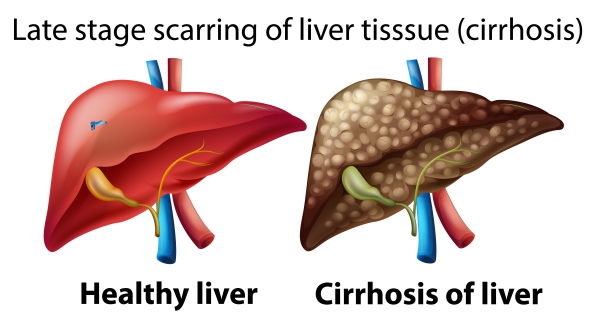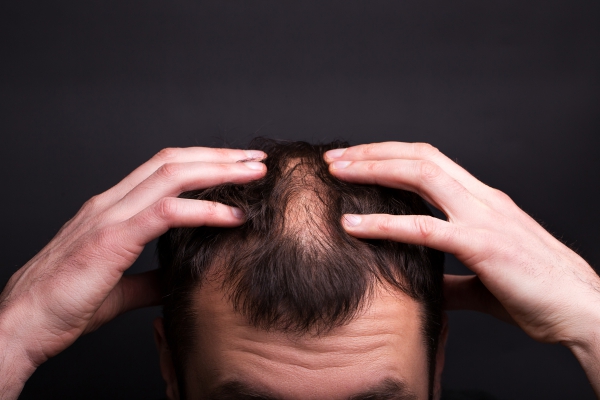Acne vulgaris, Skin disorder, Whitehead, Blackhead, Comedones, Scarring, Hyperpigmentation, Retinoids, Benzoyl Peroxide
Description : Acne vulgaris, most commonly known as acne, is a very common skin condition affecting more than 80%
Article Details :
What is Acne Vulgaris?
Acne vulgaris, most commonly known as acne, is a very common skin condition affecting more than 80% of adolescents around the world. In some cases, it can persist throughout adulthood. Around 20% of people with acne have the severe form which can cause severe scarring and have a huge impact on the mental wellbeing of the individual. This skin condition can have a significant effect on one’s self esteem and mood leading to anxiety, depression or social isolation.
It arises due to excessive production of the skin layer in combination with an increased secretion of sebum which is an oily substance secreted by the glands found in your skin. Acne vulgaris can appear on the face, neck, trunk, arms or back. The severity can range from minimal involvement to disfiguring and highly inflammatory lesions. Common complications include hyperpigmentation and scarring.
There are several treatment modalities available for the treatment of acne depending on its severity. The earlier the treatment is started, the better the results.
Causes and risk factors of Acne vulgaris
Acne occurs when the pores in your skin becomes blocked by abnormal proliferation of skin cells and excessive production of sebum. Furthermore, there is an overgrowth of a bacterium called Propionibacterium acnes which results in inflammation of your skin. When the hair follicle or pore is blocked, it may either present as a white head or a black head. In severe cases, it can appear as cysts.
The main cause of acne is genetics. Some people are more prone to have acne if they have a generic predisposition. Some cosmetic products and hair pomades or creams can cause acne. There are certain medications that can also result in acne such as steroids, lithium or certain antiepileptics. Some medical conditions causing a disturbance in the secretion of hormones can also lead to acne. Some examples of these conditions include congenital adrenal hyperplasia or polycystic ovary syndrome. Pregnancy can also trigger the appearance of acne. Friction, pressure or excessive exfoliation can all lead to acne. Friction and pressure can be caused by mobile phone, hands or helmets amongst others.
Among adolescents, males are more likely to have acne compared to females. However, in adulthood it is more common among women.
Signs and symptoms
As mentioned earlier, acne can appear on the face, neck, trunk and back. They can manifest as:
- Whiteheads: which are closed clogged pores also known as closed comedones
- Blackheads: open clogged pores which is exposed to air also known as open comedones
- Red bumps or nodules
- Pimples: which are little bumps filled with pus
- Large and painful nodules
- Large and painful nodules filled with pus
- Raised or depressed scars
- Hyper pigmented (dark) spots
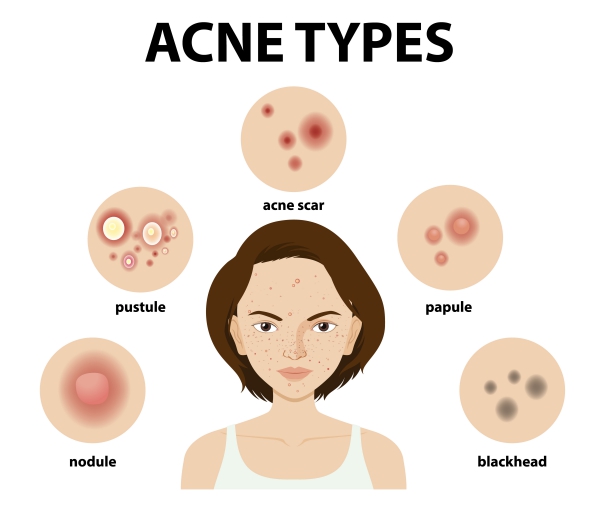
Making a diagnosis
There are no specific test for the diagnosis of acne vulgaris. The diagnosis is mainly done clinically, that is, through a good history taking and physical examination. However, in people in which there may be an underlying cause such as a medical condition, other tests will have to be done to rule out the cause. For example, if polycystic ovary disease is suspected, blood tests may be requested to check for the level of certain hormones as well as a lipid panel and blood sugar levels.
Treatment of acne vulgaris
The goal of the treatment of acne is to reduce the number of comedones and to decrease scarring. There are several treatment options available on pre ion. Your dermatologist will assess the severity of your acne and tailor your treatment accordingly. Before starting any treatment it is important to inform your doctor whether you are pregnant or planning to, as some acne treatments can have side effects on the developing baby. It is important to strictly follow your dermatologist’s instructions and adhere to the treatment prescribed carefully to get better results.
Some topical treatments include:
- Retinoids: In mild to moderate acne, topical retinoids can be very useful. They are available in the form of gels, lotions or creams. They work by decreasing inflammation in the skin as well as normalizing the proliferation of skin cells. They are usually the first medications to be prescribed. Retinoids also prevent formation of new comedones. Some examples include adapalene, tazarotene and tretinoin. However, it is very important to protect yourself from the sun when using retinoids as it can cause sun sensitivity.
- Antibiotics: Since there is overgrowth of Propionibacterium acnes on the skin in acne vulgaris, topical antibiotics can be used against it. It is also useful to decrease inflammation. Commonly used topical antibiotics include clindamycin, erythromycin or dapsone. A combination of topical antibiotics and retinoids is usually what is recommended.
- Benzoyl peroxide: This medication is also effective against Propionibacterium acnes. It is available over the counter or on pre ion and may be used once or twice a day.
In severe cases or those not improving with topical treatments, oral medications may be recommended such as:
- Oral antibiotics: A mainstay in the treatment for moderate or severe acne vulgaris are oral antibiotics. Some examples include Read more

